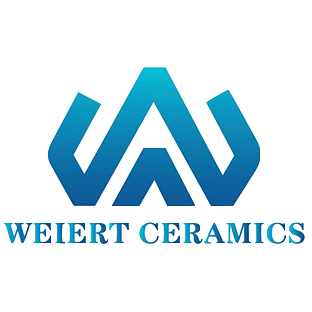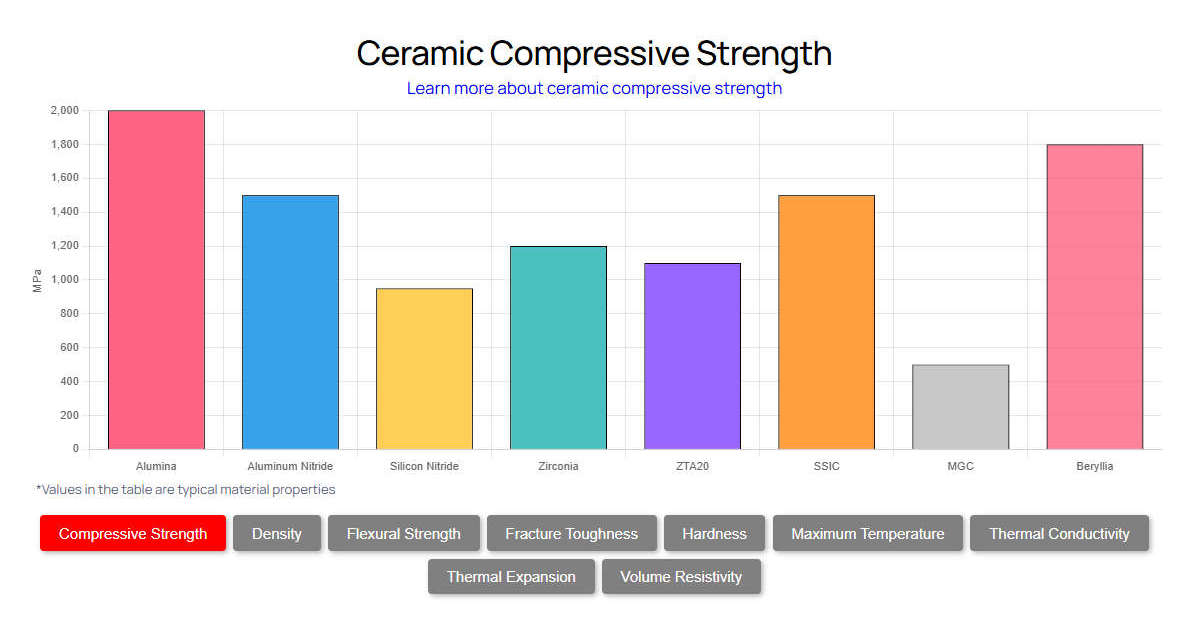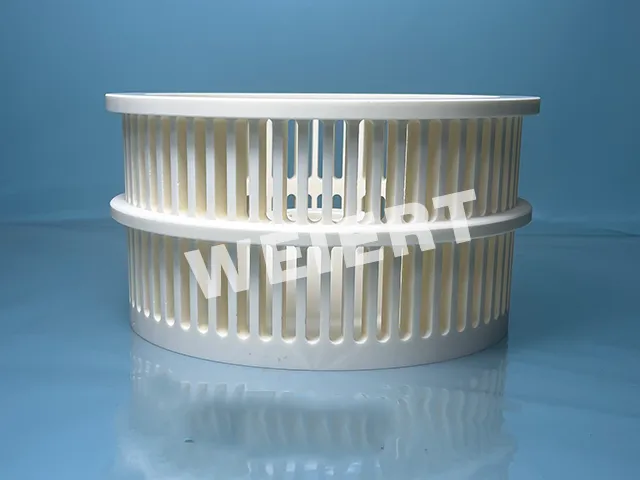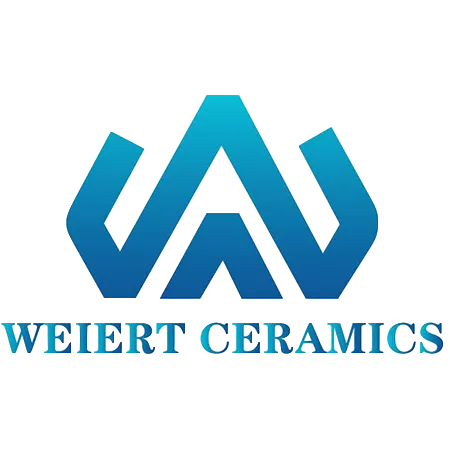Aluminum Nitride Heat Sink Component(AlN)
The Applications of Aluminum Nitride (AlN) Heat Sinks
Common types of AlN ceramic heat sinks include the AlN Ceramic Radial Heat Sink (AlN Circular Fin Heat Sink) and the Plate Fin AlN Thermal Radiator (AlN Ceramic Plate-Type Heat Sink), as shown in the figure below. Their effective heat dissipation makes them suitable for use in power electronics, automotive systems, photovoltaic energy, and LED technologies.
Performance Characteristics of AlN Ceramic Heat Sinks - Effective Thermal Management Capabilities
- High thermal conductivity enables rapid heat transfer from active components
- Electrical insulation suitable for high-voltage applications
- Oxidation resistance up to 900°C
- Resistance to chemical corrosion and moisture
- Lower density, approximately 30% lighter than aluminum
- Environmentally safe and compliant with green manufacturing standards
Due to these attributes, AlN ceramics are commonly used in electronic applications where high power and reliability are required.
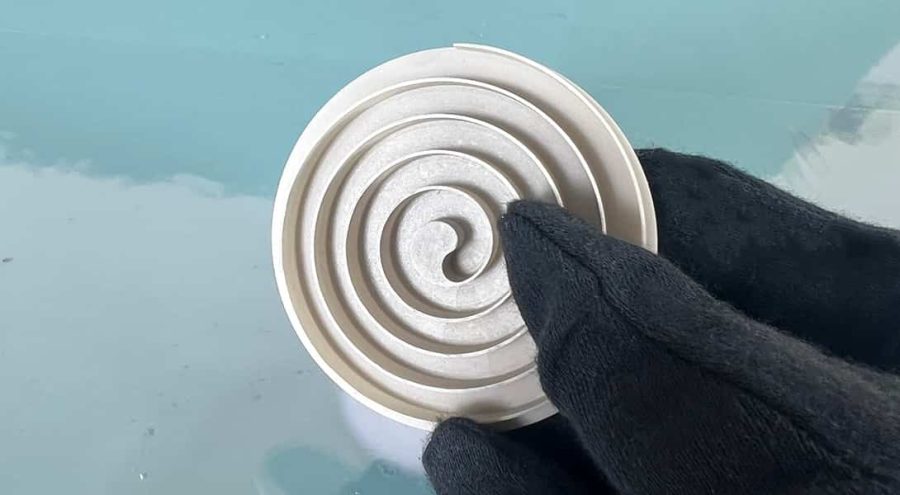
Where AlN Ceramic Heat Sinks Are Mainly Used?
1. Power Electronics and IGBT Modules
Power electronics depends on IGBT modules, which are key components in high-speed rail systems, electric vehicles, wind turbines, and 5G base stations.
Given their high output power and substantial heat generation, these modules require materials that can efficiently manage thermal loads. AlN ceramic substrates, with their high thermal conductivity and thermal expansion coefficients closely matched to silicon chips, minimize thermal stress and enhance the reliability and lifespan of power modules.
Common applications include:
- Traction systems in rail transport
- Industrial motor drives and electric mobility solutions
- High-voltage direct current (HVDC) transmission
- Uninterruptible power supplies (UPS)
- Renewable energy converters like solar and wind inverters
2. LED Packaging and Lighting Systems
As LED technology advances toward higher power densities, effective thermal management has become even more critical. AlN ceramic substrates provide the necessary combination of high thermal conductivity, thermal stability, low expansion rates, and electrical insulation.
They are widely used in mid- to high-power LED packages such as flip-chip, eutectic bonding, chip-on-board (COB), chip-scale packaging (CSP), and wafer-level packaging (WLP).
Efficient cooling helps maintain luminous efficacy and extends the operational life of LEDs. It is generally observed that reducing the junction temperature by 10°C can double the LED's service life.
3. Photovoltaic Modules and Concentrated Solar Power Systems
In concentrated photovoltaic (CPV/HCPV) applications, solar radiation is focused onto small, high-efficiency solar cells, raising local temperatures considerably.
Without appropriate heat dissipation strategies, the performance and durability of these cells would deteriorate rapidly.
AlN ceramic substrates, positioned between the chip and the heat sink with thermal interface materials (TIMs), facilitate efficient heat transfer, contributing to improved system efficiency and long-term stability.
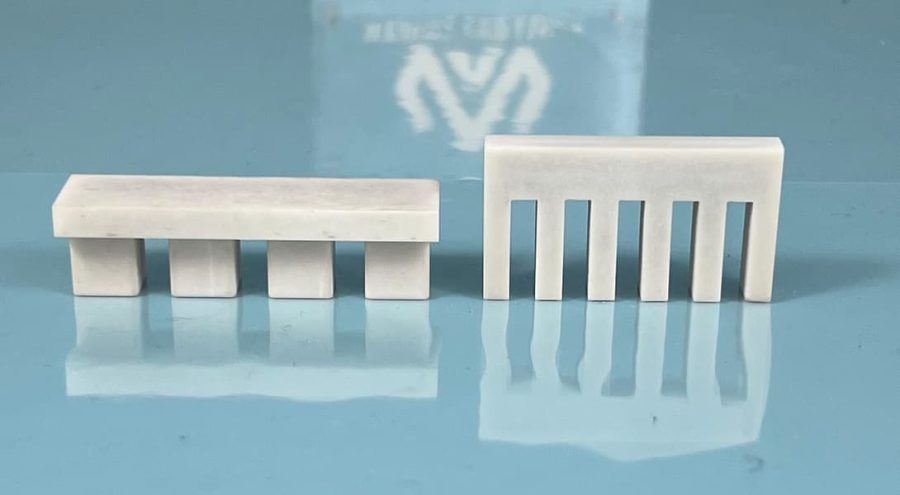
4. Microelectronics and Optoelectronic Devices
Beyond traditional power applications, AlN ceramics are utilized in semiconductor processing equipment and optoelectronic devices, including:
- Heat sinks
- Thermal spreaders
- Chucks
- Ring clamps
- Circuit substrates
- Insulation layers
- Static electrostatic chucks
- Laser thermal management modules
- Microwave package systems
Their role is vital in maintaining stable performance under high-temperature and high-frequency operating conditions.
Product Forms of AlN Ceramic Heat Sinks
Depending on specific application needs, AlN ceramics are available in a variety of shapes and configurations, such as:
- Heat sinks for high-power systems
- Crucibles for metal melting
- AlN ceramic rods and heaters
- Custom-shaped ceramic substrates
- Components for semiconductor manufacturing
- Static electrostatic chucks and thermal plates
Advanced CNC equipment enables us to machine more complex and precise AlN parts, such as propeller shapes, greatly expanding the range of applications.
What Are the Main Challenges and Where Is Research Headed for Aluminum Nitride Ceramics?
In reality, AlN ceramics don't conduct heat as well as theory suggests, mainly because of crystal defects, impurities, grain size issues, and oxygen contamination.
Also, the standard tape-casting process we use in manufacturing has drawbacks — the organic additives in the slurry prevent proper densification and mess up grain alignment, which hurts the material's performance.
